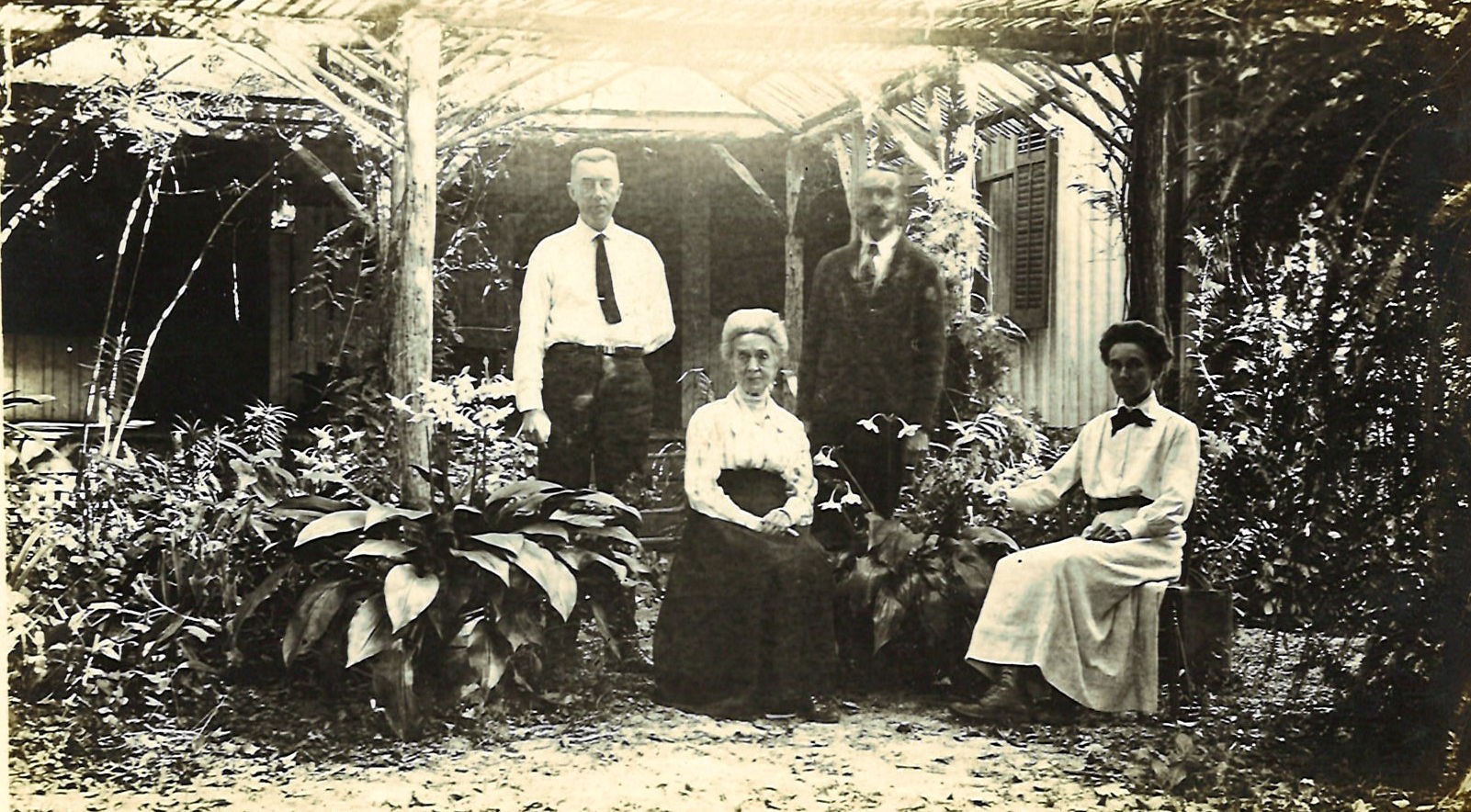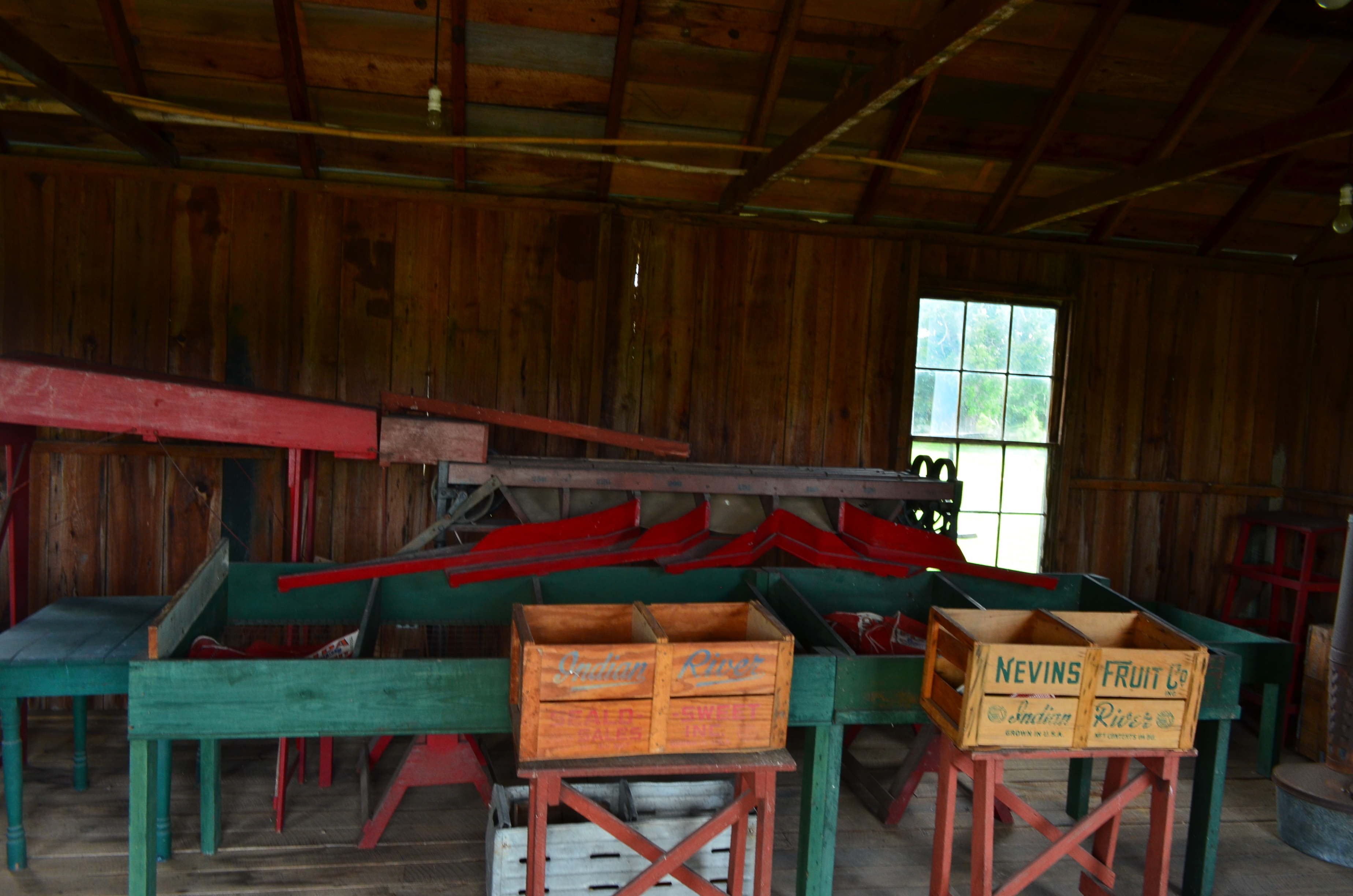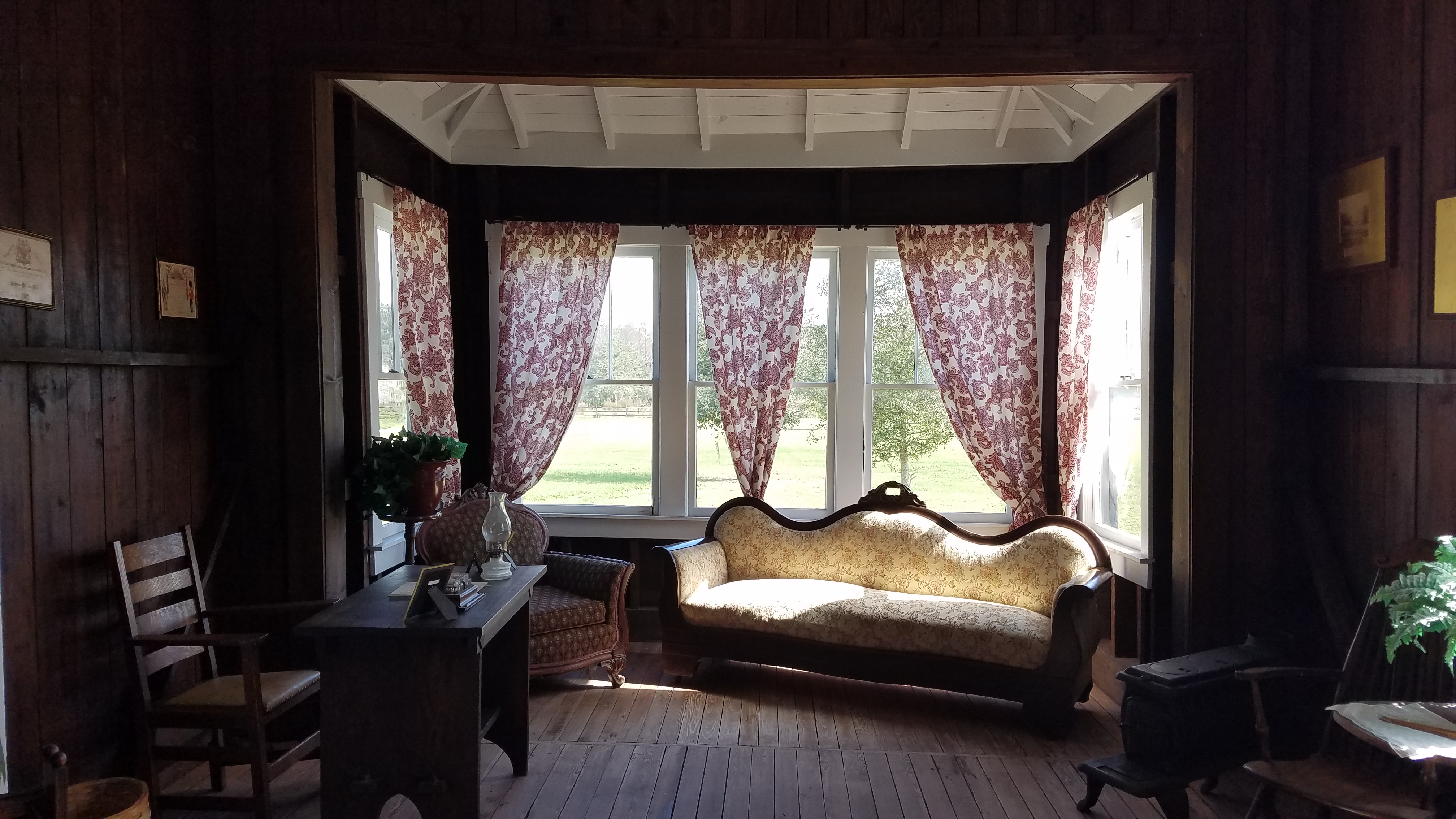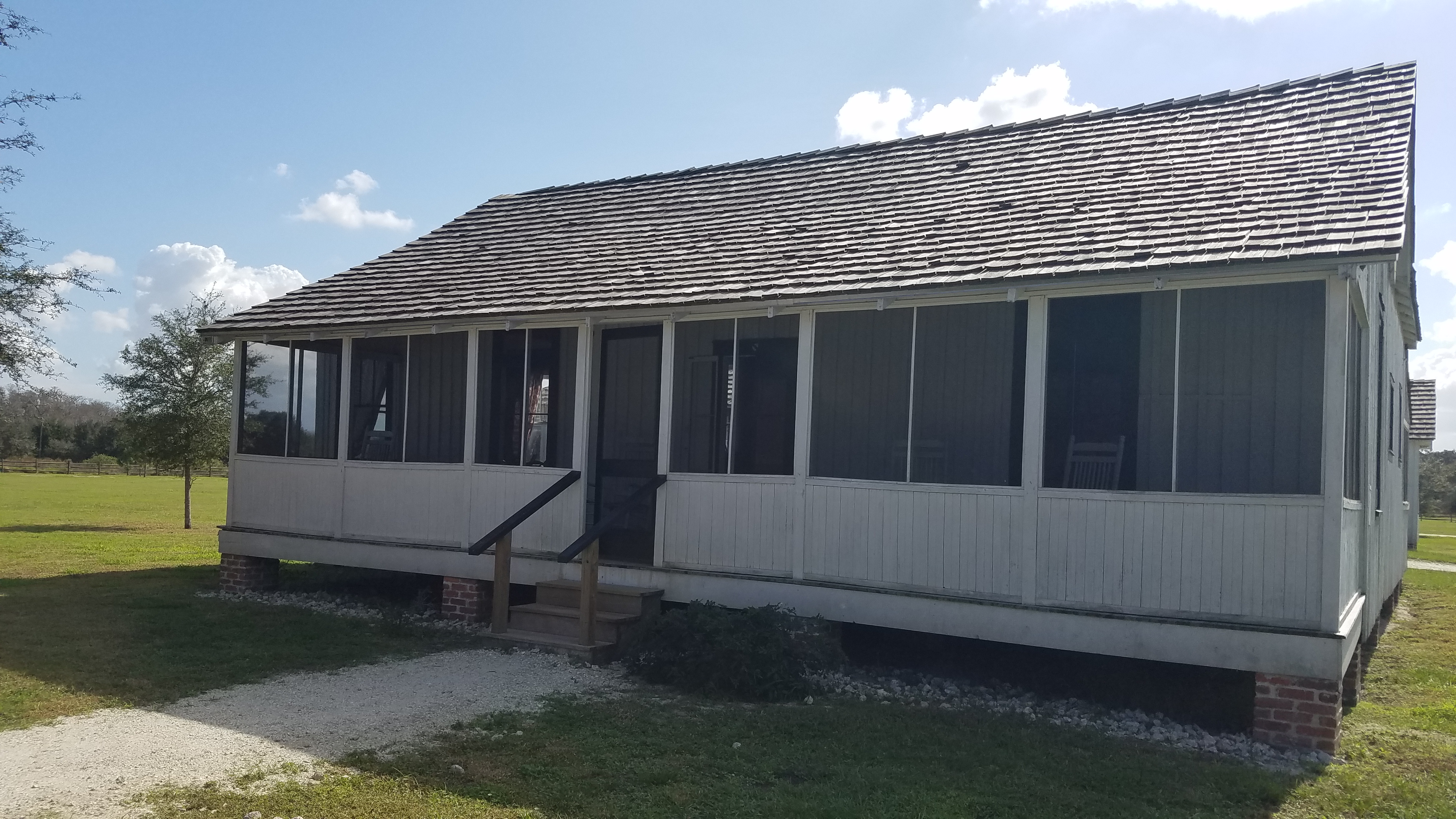Upon resigning his commission from 3rd Battalion Yorkshire Regiment, Princess of Wales’ personal guard unit, Lieutenant Colonel William Edwin Cadman of Hampstead, England, learned of an English colony being established in Narcoossee, Florida, in the United States. Now, the Cadman Family buildings are on display at Pioneer Village. Read on to learn about their fascinating history.

Impressed with what he had heard of this colony, the Colonel, his wife Jane, and two of their four children, William, age 17, and Margery, age 9, arrived in New York on March 5, 1888, aboard the ship Aurania. They boarded a train and made the journey to Kissimmee. At the station, they were met by Edward Nelson Fell, who escorted them to the luxurious Tropical Hotel. A few days later, the Fells and the Cadmans left Kissimmee on the “Colonist” steamboat for Narcoossee and arrived mid-afternoon. They were greeted by some of the settlers and a small band of Seminoles, who had been hunting and fishing in the area. Mrs. Cadman, not enthusiastic about leaving her native England for the wilds of Florida, decided she would have nothing to do with Narcoossee when she saw the Indians.
With no transportation back to “civilization” until the next day, it was necessary to spend the night. The Cadmans spent this time becoming acquainted with the Fells and other residents and looked around the area the next day. It was several days later before the Cadmans finally left, but they had selected the property they wished to purchase; an “L” shaped house of four rooms, separate kitchen, stable and buggy house, situated on 10 acres of land with six acres cleared and planted with 250 budded orange trees, and one acre in a vegetable garden. The buildings were some of the first structures erected by Fell and Davidson in 1884; they had been the “showcase” to entice prospective settlers and was the home of Walter Davidson, of the Fell and Davidson partnership. Upon arriving back in Kissimmee, Col. Cadman signed the purchase agreement and paid $3,000 for what would later be known as “The Bungalow.”
Mr. Davidson originally designed The Bungalow as a bachelors’ quarters. It was necessary to remodel the building to meet the needs of a British family not accustomed to “roughing it.” The oldest son, William, drew up sketches for the improvements and was sent to Narcoossee to supervise the work while arrangements were made to bring the remaining two children, Reginald and Godfrey, and household furnishings over from England. A drawing room and two bedrooms, one for the Colonel and Mrs. Cadman, the other for daughter Margery, were in the main house. The three boys occupied “The Bachelor’s Quarters” or “The Boys’ Room,” a separate building not connected to the main house. The kitchen and dining room were also in a separate building connected to the main house by a covered breezeway. Each bedroom had its own washstand, bowl, and pitcher; an outdoor privy was located by the woodshed. It was a very nice little house, painted inside and out, with vine-covered lattice and a wooden English sailor, complete with a red flag, standing guard. However, the troublesome mosquitoes made it necessary to have the whole place screened, and Mrs. Cadman, disturbed over the situation, insisted that indoor facilities be installed. So in 1890, The Bungalow was again remodeled. Come see what they look like now while the Cadman Family buildings are on display at Pioneer Village.

The three boys were sent to Kissimmee to oversee the transportation of the furniture to Narcoossee. The Colonist steamboat was too small to carry the entire load, so the furniture was loaded on a barge borrowed from one of the Kissimmee riverboat captains; the Colonist pushed the barge across Lake Tohopekaliga. After entering the St. Cloud canal, things went well for a few hundred yards, then everything stopped because no one thought to measure the barge to see if it would fit down the canal. The furniture was unloaded onto the bank, and the barge was worked out of the canal and anchored in the lake. Meanwhile, the Colonist was loaded with smaller items. Reginald and Godfrey accompanied the items while William stayed with the remaining furniture. The following morning, a team arrived to haul the remainder over land and found a rather hungry, weary, and mosquito-bitten William.
The Cadmans operated a citrus grove and commercial packing house and shipped fruit to England. The fruit was wrapped in paper coated with beeswax and placed in barrels for shipping. It was said that when opened, the oranges were as fresh as when they were picked, even though the trip could sometimes take as many as 90 days.

Godfrey became a minister and assisted the Colonel in securing funds for the building of St. Peter’s Episcopal Church in Narcoossee. The Colonel died in 1910. Jane, Margery, and Reginald continued to live in Narcoossee and operated the Radclyffe-Cadman Brothers citrus business. Jane passed away in 1935 but the Narcoossee house and property remained in the family and citrus operations continued. Cadman Groves, Inc. was formed in 1951 from Radclyffe-Cadman Brothers.
William Heaton Radclyffe Cadman was the only child of the Colonel and Mrs. Cadman who married. Janet Margery Radclyffe Cadman, daughter of William H.R. and Constance Cadman, married Cyrus Henry Sharp, one of the first dentists in Orlando, in 1931 in Orange County, Florida. Their son Cyrus Sharp Jr. served two years in Europe with the U.S. Army and upon returning opened a nursery near Conway Road in Orlando. In the late 1960s, he sold the land to the state and managed the family citrus groves in Narcoossee until the harsh freezes that occurred in the early 1980s (Jan. 1981, Jan. 1982, Dec. 1983). Cyrus Sharp Jr. and his mother Janet (Cadman) acquired the Narcoossee property around 1982 when Cadman Groves, Inc. ceased operations. Cyrus Sharp Jr. passed away in 2002.

In 2005, Col. Cadman’s great-great-grandson Cyrus H. Sharp III donated to the Osceola County Historical Society the citrus packing building, complete with packing house equipment, and The Bachelor’s Quarters. The Bungalow, complete with separate kitchen, contents of both structures, additional artifacts, and memorabilia was presented in 2014 to Osceola History. The Bungalow and other Cadman family buildings are on display at Pioneer Village at Shingle Creek.